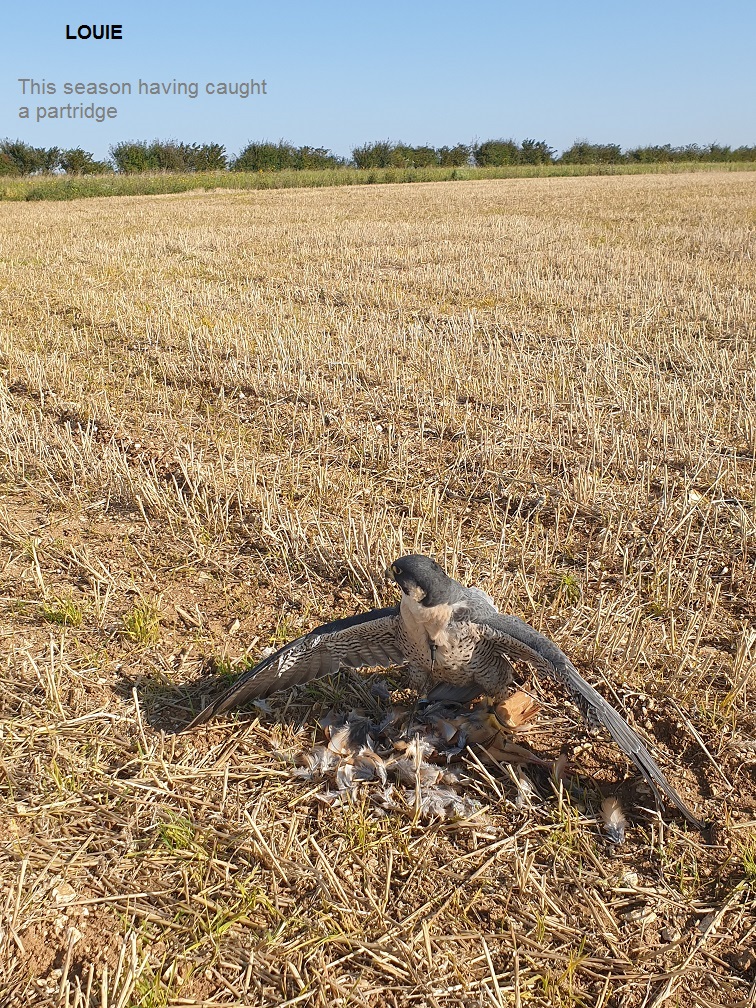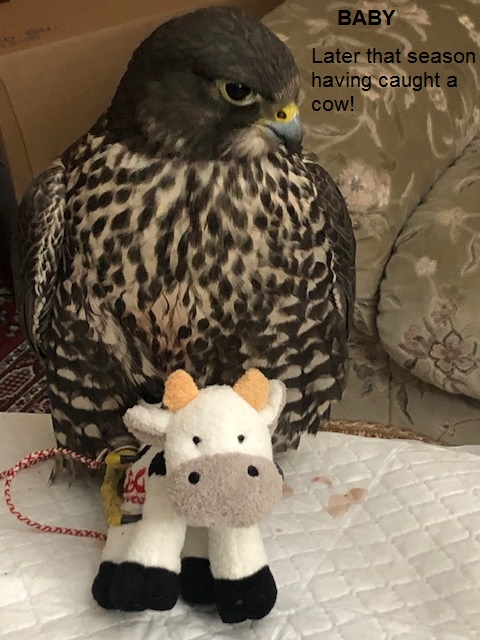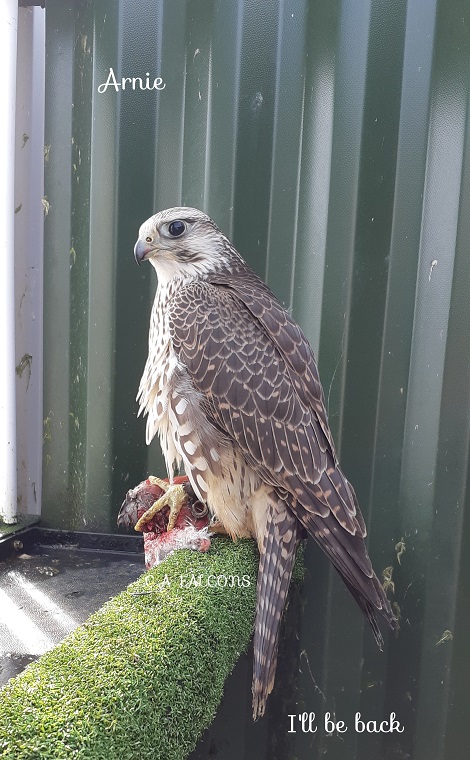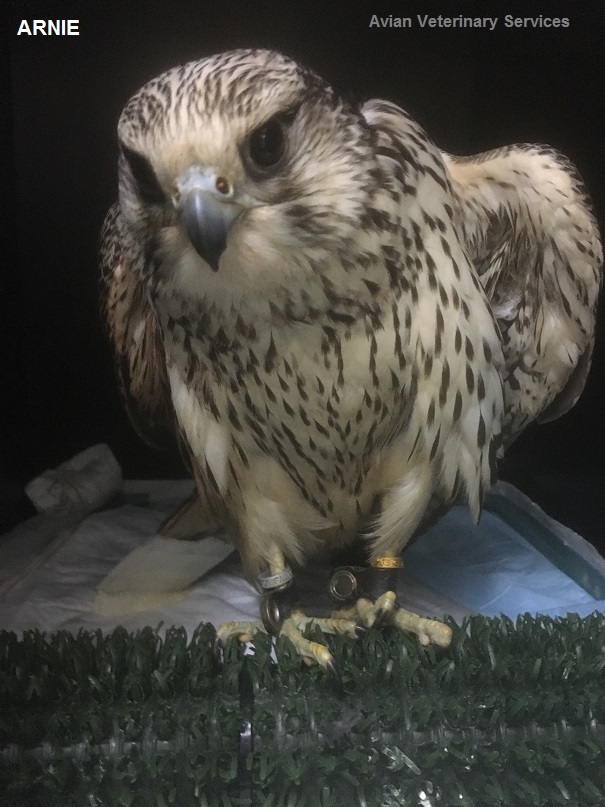 Shockingly, within a relatively short period during the winter of 2019 / 2020 AVS were presented with three separate cases of life-threatening injuries to falconry birds after being shot!
Shockingly, within a relatively short period during the winter of 2019 / 2020 AVS were presented with three separate cases of life-threatening injuries to falconry birds after being shot!
This is not the forum to express our anger at these instances and accidents do happen, but if you honestly cannot identify the species you are shooting at, you clearly should not be in charge of a deadly weapon.
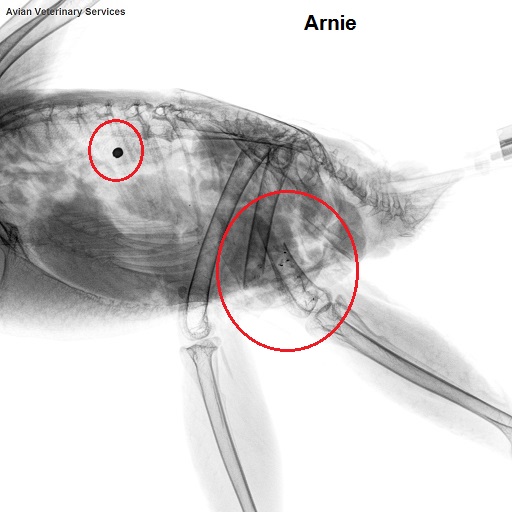
The first was Arnie, a Gyr/Peregrine tiercel (male), who at the time was flying at a falconry meet in the North of England and climbing nicely when he stooped at something in the distance. His GPS transmitter rapidly led the owner to where he was found grounded on a neighbouring estate. A shooting party nearby apparently had not seen a thing.
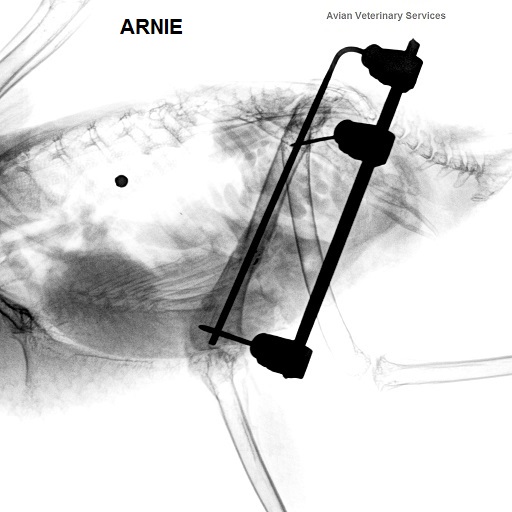
X-rays confirmed he had indeed been shot, sustaining open fractures to both femur and wing tip. Open fractures do carry a much poorer prognosis but given the relatively short period of time between the incident and presentation, we felt it was worth a shot (excuse the pun!).
The femur fracture was stabilised using a hybrid fixator, where a stainless-steel pin is placed inside the hollow bone, bent at 90 degrees and ‘tied in’ to threaded pins screwed in from the outside. This forms an incredibly stable structure with the advantage that the joints above and below the fracture are still free to move, allowing weight bearing and natural ‘physio’ throughout the healing process. The wing fracture was very well aligned and so managed conservatively with a figure 8 dressing.
 The second was Louie, a peregrine tiercel, who following a flight had been tracked down grounded and unable to fly. It was initially suspected that he had been injured by a guilty-looking buzzard that was also found at the scene.
The second was Louie, a peregrine tiercel, who following a flight had been tracked down grounded and unable to fly. It was initially suspected that he had been injured by a guilty-looking buzzard that was also found at the scene.
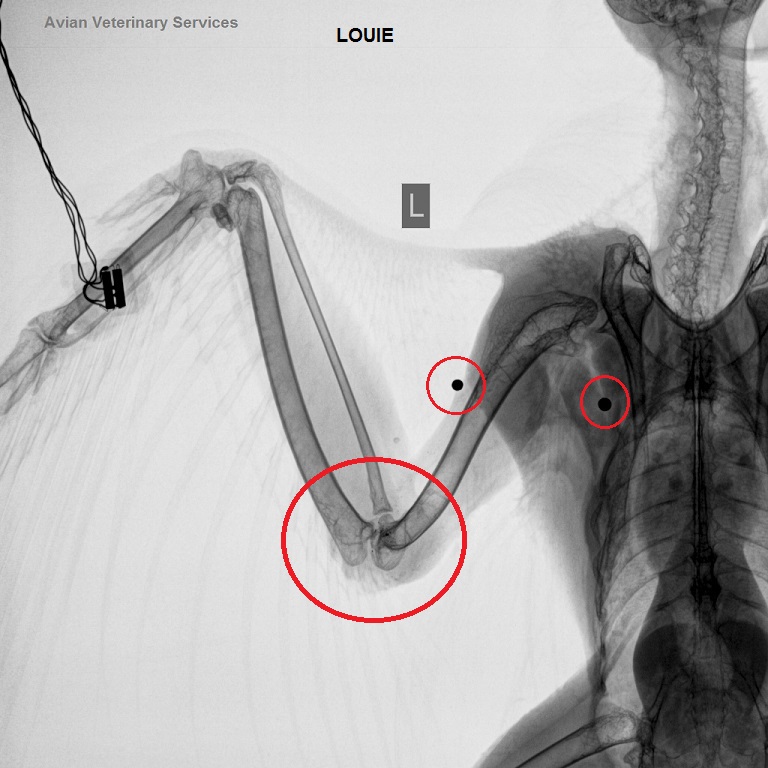
X-rays, however, revealed a fracture of the right ulna and the presence of lead shot in the pectoral muscle mass that had passed straight through the left elbow joint causing significant damage with hairline fractures and bruising/leakage of joint fluid into the surrounding tissue.
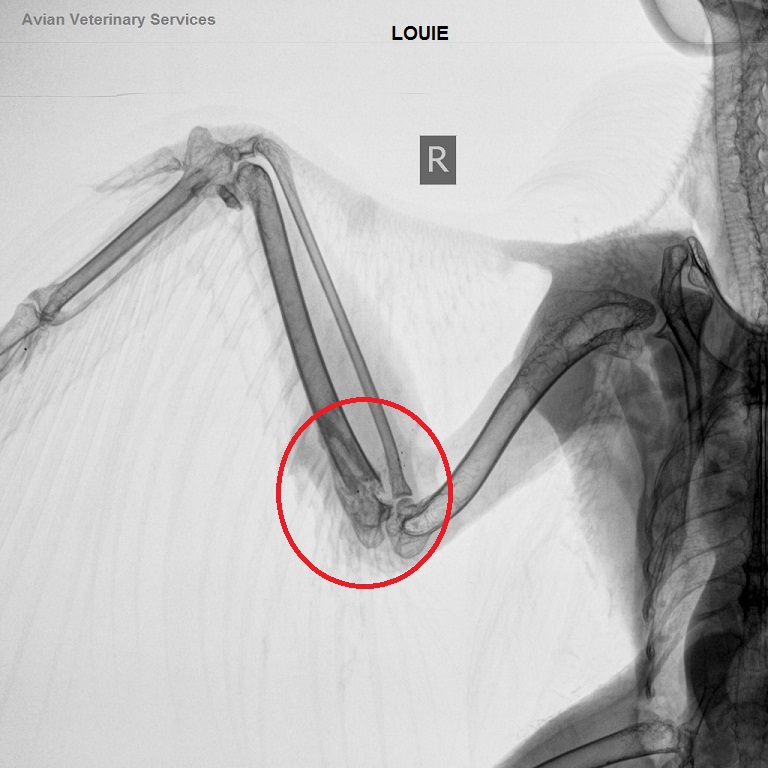
With recent advancements in avian orthopaedic surgery, even in performance falconry birds the majority of fractures are indeed manageable to full return to function, however significant joint damage, as seen here, still carries a very poor prognosis with a high likelihood of crippling degenerative joint disease/arthritis. As well as being a cherished hunting hawk Louie was also a breeding male so, even though the prognosis for return to function was poor, we again elected to give him the benefit of the doubt as even if unable to hunt, he would at least hopefully be able to help produce the next generation of gamehawks and with the wing being ‘non-weight bearing’ any long-term damage is less likely to cause him significant pain. The excess joint fluid was drained off and examined under the microscope to rule out secondary infection, and because the right radius was intact, acting as a natural splint to the ulna fracture, it was elected to avoid surgery and manage both fractures conservatively with strict confinement/rest and pain relief, thus avoiding immobilising the elbow therefore minimising the risk of it ‘seizing up’.

Finally, Baby a breeding male Gyr or Jerkin who had escaped from his aviary. When he was located a week later was thin, unable to fly and a wound was noted on his chest. X-rays once again confirmed he had indeed been shot, this time by an air gun pellet!
Examination under anaesthesia demonstrated that the tissue had pretty much healed over the pellet. With it lying deep within the pectoral 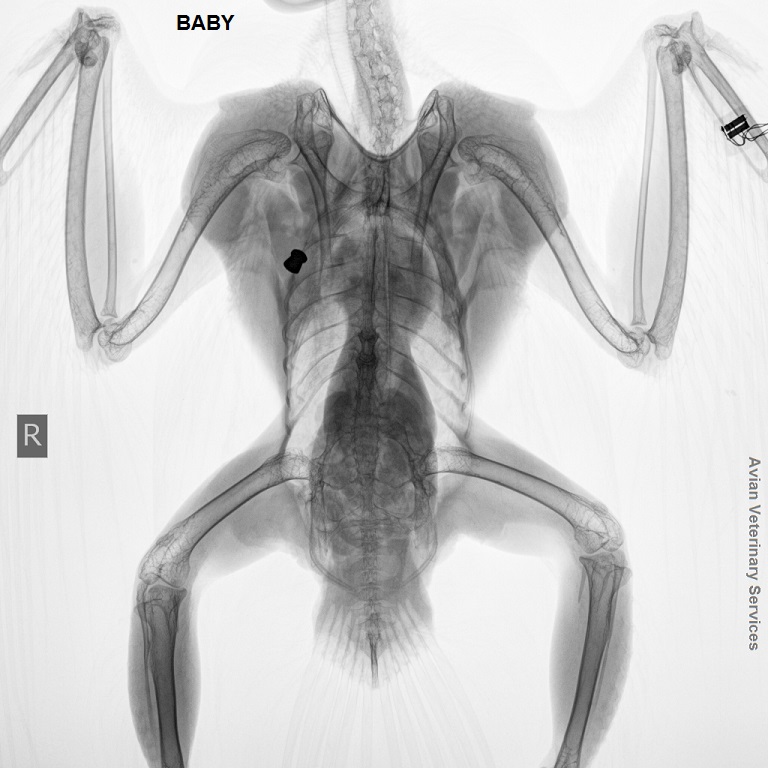 muscle mass near some important blood vessels and nerves and the fact that lead is only toxic when ingested and exposed to stomach acid we elected to obey the first rule of veterinary medicine, which is ”
muscle mass near some important blood vessels and nerves and the fact that lead is only toxic when ingested and exposed to stomach acid we elected to obey the first rule of veterinary medicine, which is ”  First, do no harm” and leave well alone, unless it caused a problem. He was put on some covering antibiotic, antifungal and anti-inflammatory pain relief medications.
First, do no harm” and leave well alone, unless it caused a problem. He was put on some covering antibiotic, antifungal and anti-inflammatory pain relief medications.
We are delighted to report that against the odds all three birds made a complete recovery and news from excited owners that Arnie had caught his first grouse the following August and that Louie had resumed both his breeding and hunting career made us smile for a week and even during these difficult times reminds us exactly why we do this job!!
